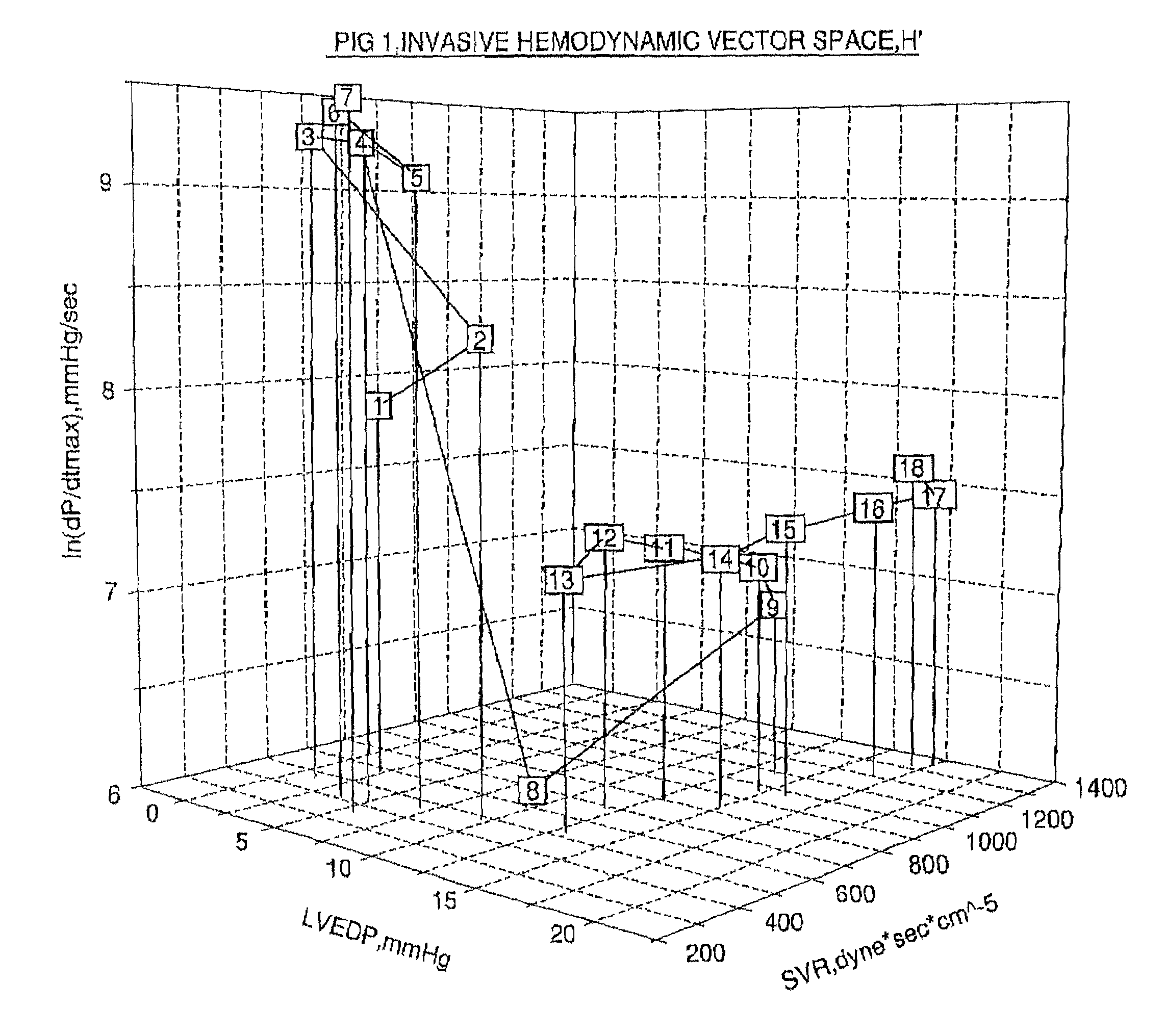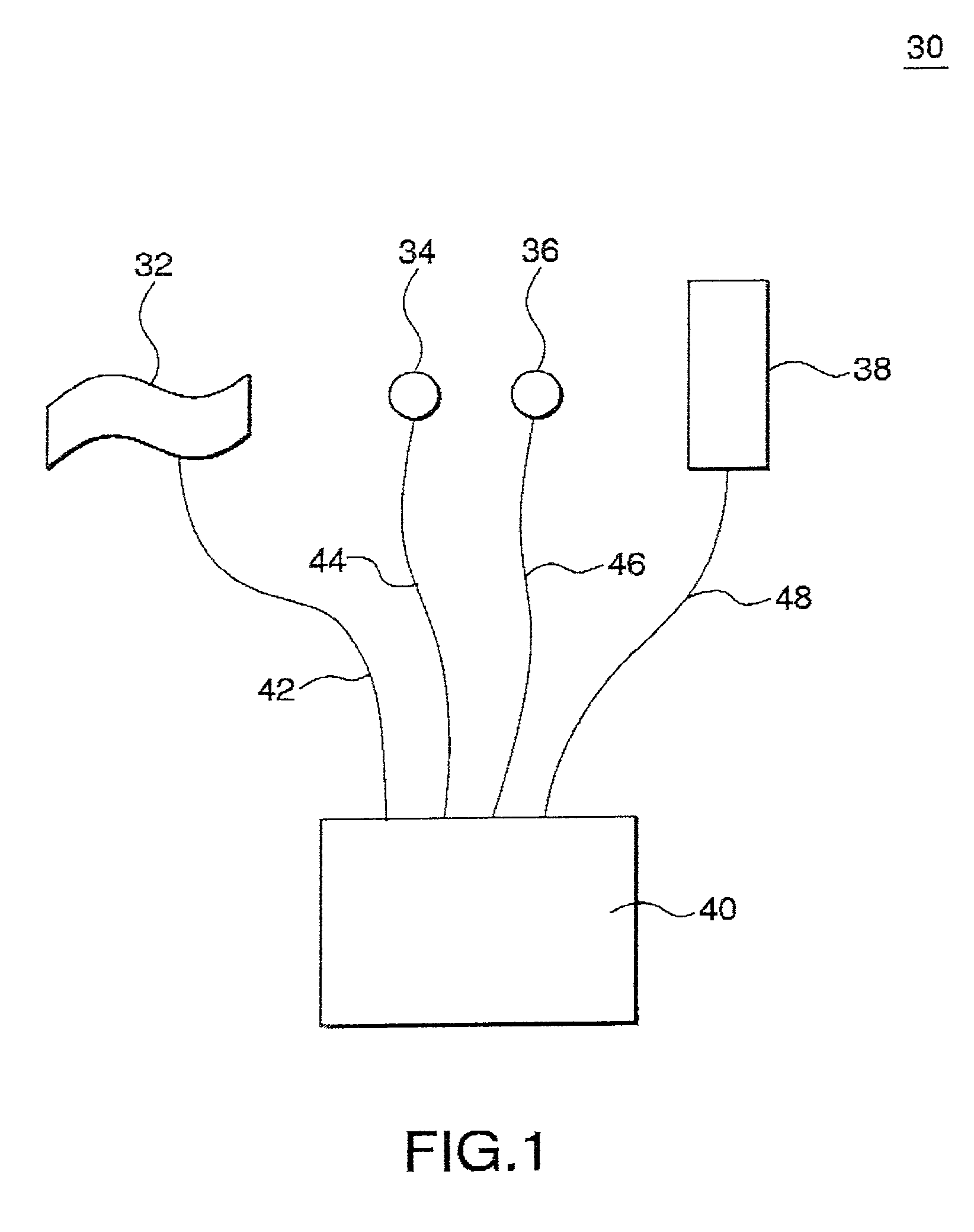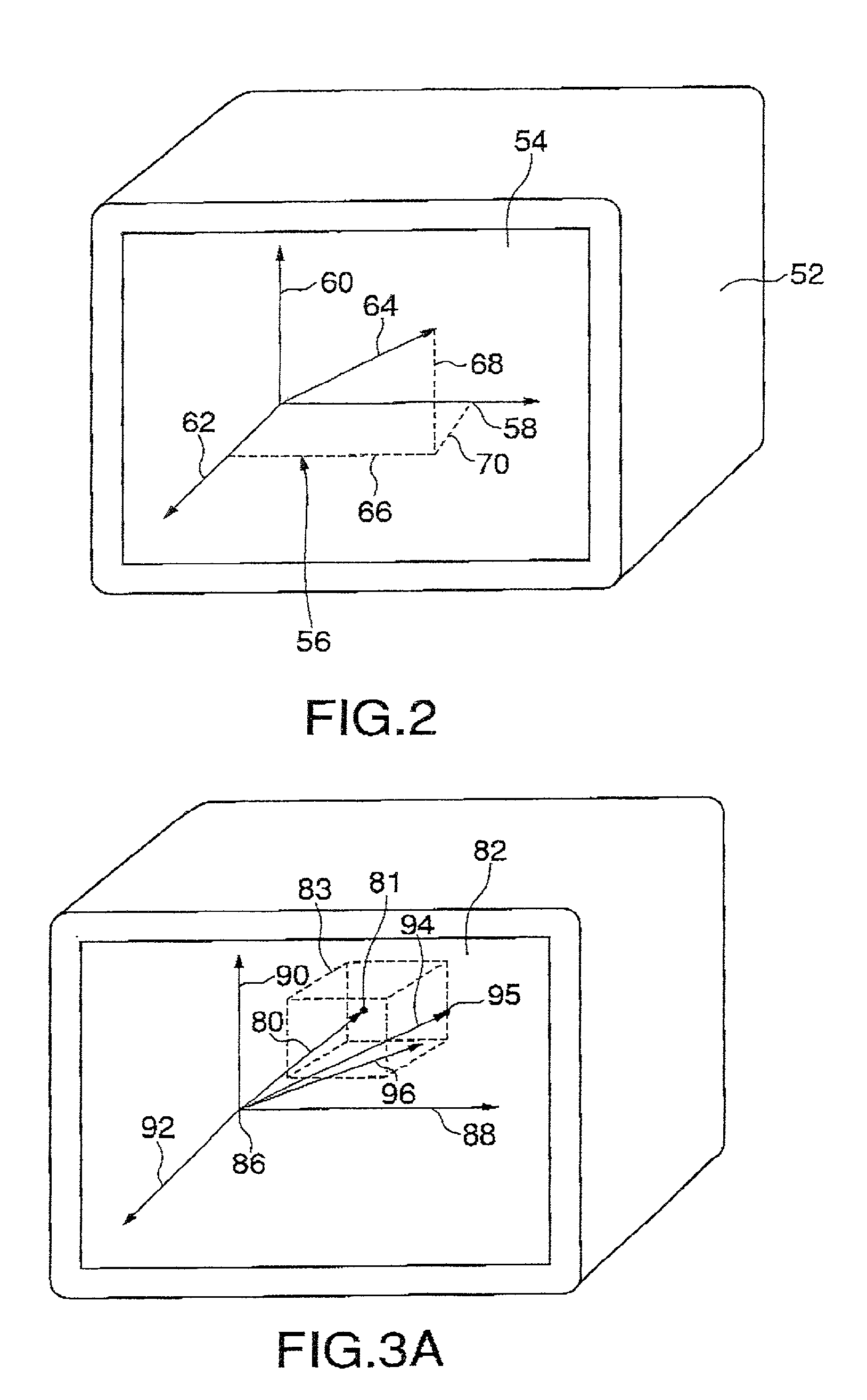Non-invasive method and device to monitor cardiac parameters
a cardiac parameter and non-invasive technology, applied in the field of non-invasive methods and devices to monitor cardiac parameters, can solve the problems of patients suing for medical malpractice, patients' progressive depression of the central nervous system, and patients' inability to fully recover, so as to reduce the cost of care and perioperative morbidity, the effect of high risk and high cos
- Summary
- Abstract
- Description
- Claims
- Application Information
AI Technical Summary
Benefits of technology
Problems solved by technology
Method used
Image
Examples
first embodiment
[0092]In one preferred embodiment of the transformation method according to the present invention, the transformation is accomplished by multiplying the (EI, MAP, E−M) vector by a diagonal matrix as shown below. Let x be a vector in the non-invasive hemodynamic space M of the form (EI, MAP, E−M). Let A be the diagonal matrix shown below. If we represent x vertically as a column vector, we can multiply it by the matrix A such that Ax=b, where b is a vector of the form ((EI*MAP*E−M), (MAP*E−M), 1 / (E−M)), that is approximately equivalent to (LVEDP, SVR, dP / dtmax), and the first plurality of cardiac parameters responsive to external medicines as being demonstrated in the equation below.
[0093](MAP*(E-M)000E-M0001 / (E-M)2)(EIMAP(E-M))=(EI*MAP*(E-M),MAP*(E-M),1 / (E-M))
[0094]The above operation of multiplying the vector by a matrix linearly transforms the vector x into the vector b. Vector b constitutes a new vector space N or a second Non-invasive Space whose axes are responsive to external...
second embodiment
[0148]In the present invention, LVEDP, SVR and dP / dtmax are correlated with the non-invasively measured results according to Eqs. 19, 20 and 21. The correlations have led to the following processing results and conclusions. There are close correlations between the invasively measured parameters and the parameters derived from non-invasive measurement through another correlation method according to the present invention. An improved formulation is disclosed for a non-invasively derived analogue of Left Ventricular End-Diastolic Pressure (LVEDP). In diastole, the left ventricular pressure is an exponential function of left ventricular volume, and this relation holds at any point during the diastolic filling interval including end-diastole. Therefore, LVEDP is an exponential function of Left Ventricular End-Diastole Volume (LVEDV).
[0149]Let DI be the diastolic filling interval. To a reasonable approximation,
DI=T−EI Eq. 25
where T is the time period of the cardiac cycle. T is non-invasi...
PUM
 Login to View More
Login to View More Abstract
Description
Claims
Application Information
 Login to View More
Login to View More - R&D
- Intellectual Property
- Life Sciences
- Materials
- Tech Scout
- Unparalleled Data Quality
- Higher Quality Content
- 60% Fewer Hallucinations
Browse by: Latest US Patents, China's latest patents, Technical Efficacy Thesaurus, Application Domain, Technology Topic, Popular Technical Reports.
© 2025 PatSnap. All rights reserved.Legal|Privacy policy|Modern Slavery Act Transparency Statement|Sitemap|About US| Contact US: help@patsnap.com



